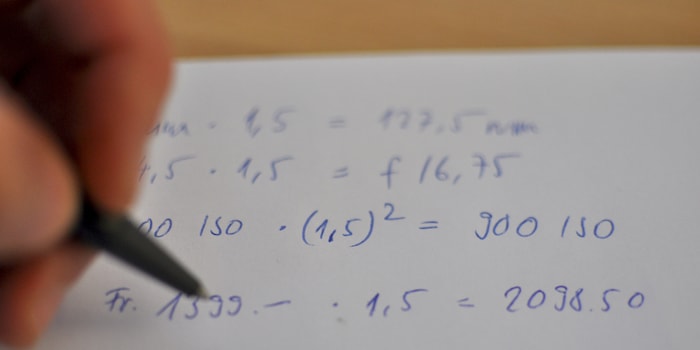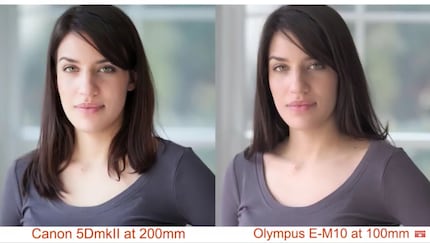
Do you also have to convert the speed to 35mm format?
The same focal length looks different on different sensor sizes, which is why it is sometimes converted to 35 mm format. Do you also have to do this with the aperture and speed?
In the comments to the article about lens designations, a discussion arose about whether you have to convert the speed in the same way as the focal length when using full-frame lenses on cameras with smaller sensors (APS-C). The answer to this is not so simple, and I will be careful not to answer it with just "yes" or "no".
The starting point for the idea of converting the light intensity is as follows: If you photograph the same image section with the same aperture using different sensor sizes, the photo will still not look quite the same: the depth of field is different. The unfocussed background is more blurred on the large sensor.
Tony Northrup shows this very nicely in his explanatory video, here is a screenshot of it. You have to pay attention to the window frames in the background:

You can now also offset the f-number with the crop factor in order to achieve a comparable depth of field. Example: APS-C: 75 mm and f/4 corresponds to an image in full format with 112.5 mm focal length and f/6.
So far, so good. But you have to be extremely careful not to draw the wrong conclusions. In particular, you must not confuse the converted values with the real ones.
If you adjust the image section for different sensor sizes, the real focal length will be different. And the depth of field depends on this physical focal length, not on the sensor size. If you use the same real focal length, for example with a fixed focal length lens, then the depth of field is the same with the same aperture on both sensor sizes. I've tried to illustrate this quick and dirty (it's not the same lens and the cameras are from different brands, so please don't get me hung up on details):

Full frame camera, 35 mm, f/4.

APS-C, same focal length and aperture (35 mm, f/4).

Detail of the shot with full-frame camera. The degree of blurring in the background is the same as in the shot with an APS-C camera.
It is also not the case that a lens with a speed of f/4 on a full-frame sensor would then only have a speed of f/6. The real light intensity remains at f/4, it does not change. It is a fixed property of a lens, which is why it is not a marketing gimmick to write this property on the lens.
As is well known, the aperture not only says something about the depth of field, but also how long the exposure can be under certain conditions - and this is the main point when talking about "light intensity".
How strong the exposure is depends on three factors: Exposure time, aperture and ISO sensitivity. If a particular photo is correctly exposed at 1/60th of a second, f/2 and 100 ISO, then that's always the case, regardless of the sensor size and the lens used. If I start to convert the aperture, the exposure is no longer correct.
There are now people who claim that you also have to convert the ISO value, i.e. multiply the crop factor by the square. 1.5 squared is 2.25. In the example above: APS-C: f/2 and 100 ISO corresponds to f/3 and 225 ISO in full format.
This double conversion means that the exposure is correct again. But the whole calculation only relates to the comparability of images, not lenses. A lens with a speed of f/6 (if that even exists) does not have a speed of f/4 on APS-C. It is still f/6.
Conclusion
If you want to use a full-frame lens on an APS-C camera, you must observe the following:
- For the same image section, the focal length on an APS-C must be divided by the crop factor (1.5). However, the depth of field does not remain the same. To achieve the same depth of field, the f-number would also have to be offset against the crop factor.
- The real light intensity of a lens, i.e. the maximum aperture that can be selected, remains completely unaffected by all these calculations. A lens with a speed of f/4 always delivers f/4, regardless of the sensor size.
It's best to forget all the rest, it only causes unnecessary confusion.
My interest in IT and writing landed me in tech journalism early on (2000). I want to know how we can use technology without being used. Outside of the office, I’m a keen musician who makes up for lacking talent with excessive enthusiasm.
Interesting facts about products, behind-the-scenes looks at manufacturers and deep-dives on interesting people.
Show all